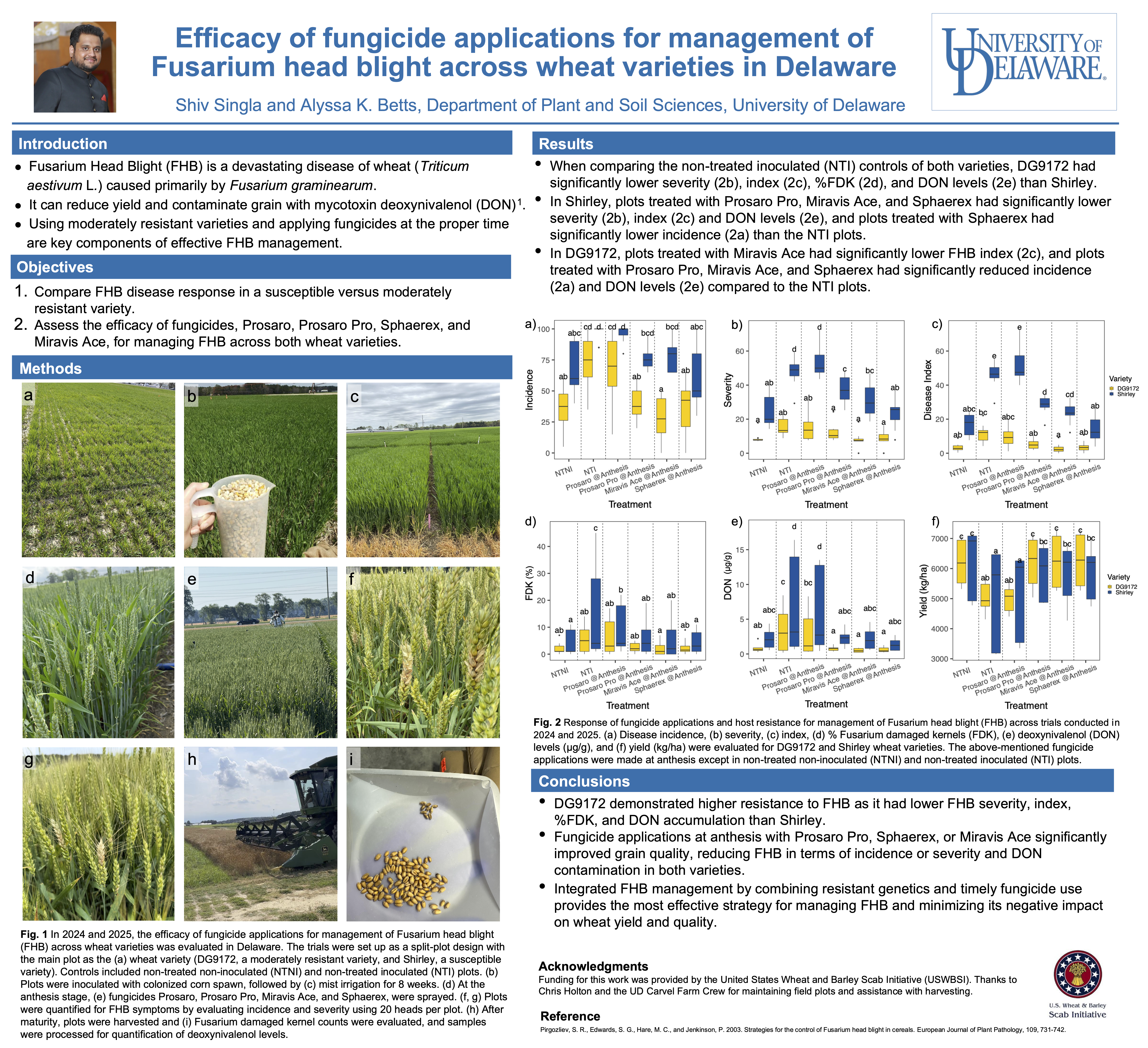Authors: Shiv Singla and Alyssa K. Betts
1. University of Delaware, Department of Plant and Soil Sciences, Newark, DE
Corresponding Author: Alyssa K. Betts, akoehler@udel.edu
Presenting Author: Shiv Singla
Abstract
Wheat (Triticum aestivum L.) is one of the most widely grown food crops globally, with over 215 million hectares under cultivation. However, its production is increasingly threatened by diseases such as Fusarium head blight (FHB), which not only deteriorates yield but also grain quality. FHB is primarily caused by the fungus Fusarium graminearum, which produces mycotoxins like deoxynivalenol (DON) in the infected grain. Management of FHB relies on partial resistance in wheat varieties and the application of properly timed fungicides. As new varieties and fungicide products enter the market, testing is needed to evaluate their efficacy for the management of FHB under regional environmental conditions. In 2024 and 2025, susceptible variety Shirley and moderately resistant variety DG9172 were assessed in combination with four fungicide treatments, Prosaro®, Prosaro Pro, Miravis® Ace, and Sphaerex®, applied at anthesis for their efficacy in controlling FHB. The trial was set up as a split-plot design and included two controls: one inoculated and one non-inoculated, non-treated control, with five replications. All inoculated plots received 0.78 kg of colonized corn spawn per plot, and mist irrigation was set up in all plots. Plots were evaluated for FHB incidence, FHB severity, Fusarium damaged kernels (FDKs), DON, and yield. When comparing the non-treated inoculated controls of both varieties, DG9172 had significantly lower severity, FHB index, %FDK, and DON levels. In Shirley, plots treated with Prosaro Pro, Miravis Ace, and Sphaerex had higher yield and lower severity and DON levels, plots treated with Sphaerex had significantly lower incidence, and all fungicide treated plots had significantly lower %FDK than the non-treated inoculated plots. In DG9172, plots treated with Miravis Ace had significantly lower FHB index, and plots treated with Prosaro Pro, Miravis Ace, and Sphaerex had significantly lower incidence and DON levels and higher yield than the non-treated inoculated plots. While fungicide applications at anthesis can improve grain quality and yield across varieties, the use of host resistance allows for additive effects in FHB management, resulting in lower severity, index, %FDK, and DON accumulation. This study provides practical guidance for wheat growers in Delaware on effectively managing FHB by combining the use of moderately resistant varieties with well-timed fungicide applications.

